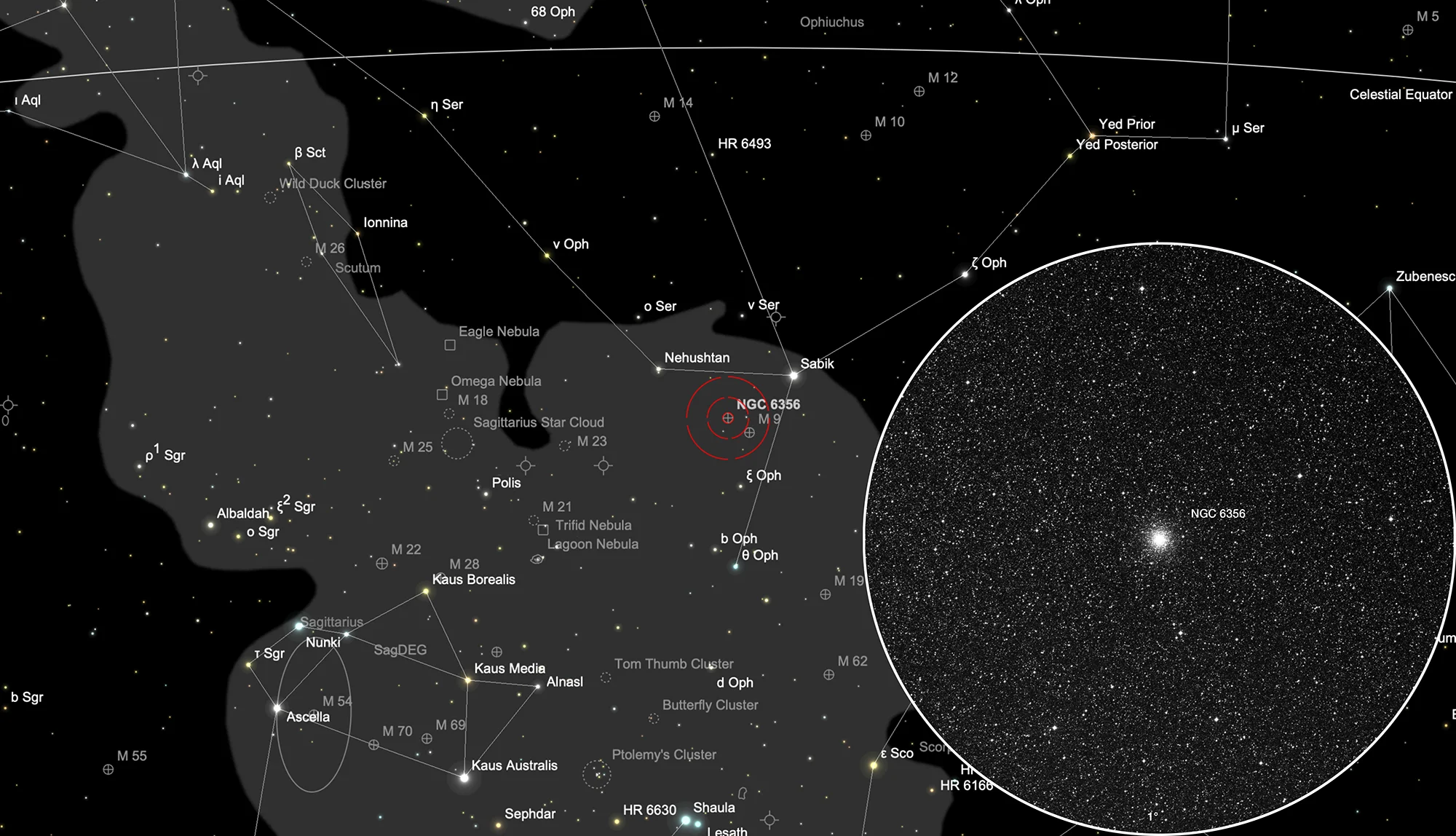Globular Cluster NGC 6356
History
This globular cluster was discovered by William Herschel on 17 June 1784 and listed as bright nebula I 48. He noted: «Bright, large, round, gradually brighter in the middle, easily resolvable.» [463] From the Cape of Good Hope, John Herschel observed it during sweep 699 on 18 May 1836 and recorded it as h 3683 with the notes: «Globular cluster, very bright; round; very gradually very much brighter in the middle; 90" resolved into stars barely resolvable with left eye. A beautiful softly shaded object.» [11]
Physical Properties
| Designation | NGC 6356 |
| Type | GCL (II) |
| Right Ascension (J2000.0) | 17h 23m 35.0s |
| Declination (J2000.0) | -17° 48' 45" |
| Diameter | 10 arcmin |
| Visual magnitude | 8.2 mag |
| Metric Distance | 15.100 kpc |
| Dreyer Description | globular, vB, cL, vgvmbM, rrr, st 20 |
| Identification, Remarks | WH I 48; h 3683; GC 4296; GCL 62; ESO 588-SC1 |
Finder Chart
The globular cluster NGC 6356 is located in the constellation Ophiuchus, circa 1° northeast of globular cluster Messier 9. On 13 June it is in opposition to the Sun. From your location it can best be seen in the months February to November.
